Adriatic
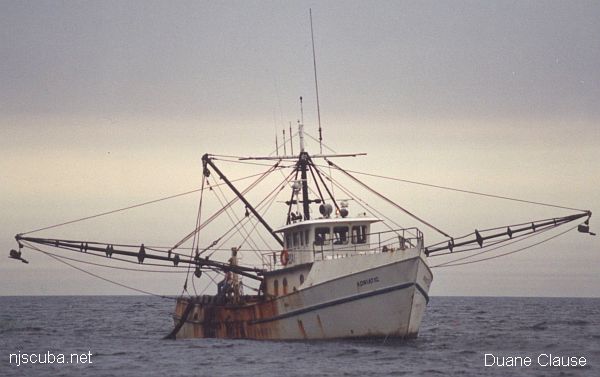
"This picture was taken several years ago by my wife, Debbie. We were searching for the Adriatic's lost clam dredge that day. Later, after the sinking, my group of divers was the first to dive on and identify her. I used this picture at the dive site to set the dive plan and objectives."
- Capt. Duane Clause, Porthole II
- Type:
- shipwreck, clam dredge, USA
- Built:
- 1977, Master Marine, Bayou La Bâtre AL USA
- Specs:
- ( 74 ft ) 134 gross tons, 4 crew
- Sunk:
- Monday January 18, 1999
foundered in rough seas - no survivors - Depth:
- 65 ft

The Adriatic foundered in rough seas just a few miles off the beach. The hull now lies completely upside-down on a very silty mud bottom, with dredge, clam cages, outriggers, and the top of the pilothouse scattered off to the west. Holes were cut in the hull during the investigation of the sinking.
Sea Bass and Blackfish swarm over the wreck, but no lobsters.

From the Coast Guard Report:
(4) F/V Adriatic. Sinking, 18 January 1999, loss of four lives, no survivors.
On 18 January 1999, Coast Guard Station Atlantic City, NJ received a call from a worker at Barney's Dock in Atlantic City reporting F/V Adriatic was overdue from a fishing trip. Two Coast Guard HH-65A Dolphin helicopters from Air Station Atlantic City and a 47-foot motor lifeboat from Station Barnegat, NJ, searched the area. The Coast Guard recovered a life ring with the name F/V Adriatic stenciled on it, and an unmarked survival suit six miles offshore. F/V Adriatic was located sunk about nine miles due east of Barnegat Light, NJ. No survivors were found; two bodies were later recovered in the vessel and two crewmembers are missing.
F/V Adriatic sent out a distress call but it was too garbled to understand, delaying a search that might have saved all four crewmembers.
Preliminary Findings:
- Vessel sank quickly in heavy weather with a full load of clams.
- Unintelligible "Mayday" call was picked up by rescue units, but units were unable to ascertain vessel's position or name.
- The video of vessel's exterior shows no evidence of hull fractures or failure. Video from the engine room reveals evidence of maintenance problems with the main sea suction valve and clam pump piping. The valve stem of the main sea suction valve was broken off, and a flange of 10" sea suction line was missing two bolts with two additional bolts loose. The sea suction valve was held in a fully open position with a pulling device called a come-along. There was no ability to close the main sea suction valve, and there was an approximately 1 inch gap in the flange.
- The EPIRB transmitted a signal, but did not deploy and float to the surface. A pin in the hydro release had not been replaced in accordance with the manufacturer's recommendation.
- The liferaft was initially caught in the railing of the vessel and was still attached to the sea painter and in the casing. Approximately six days after the casualty, the raft was found fully inflated after it washed ashore and was recovered by Station Barnegat.
- A sister vessel's stability analysis puts the maximum load at 30 cages of clams which was the amount being carried at time of casualty.
- There is no record of any members of crew having participated in safety training given by various entities in Mid Atlantic Marine Safety Association.
- Marijuana was found in a pocket of a deceased crewmember and a bong found in personal articles, but autopsies revealed no evidence of drug or alcohol influence.
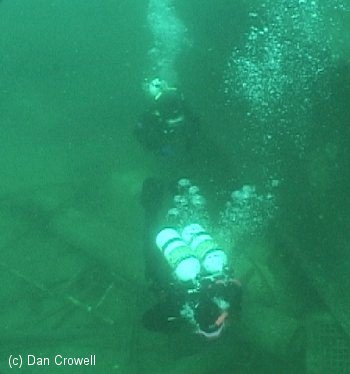

with prop and rudder at upper-right

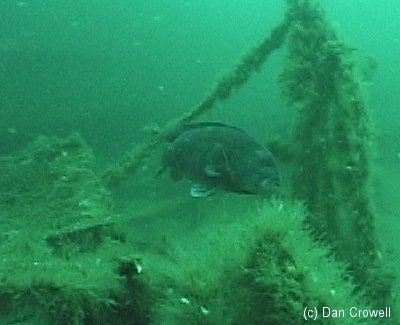

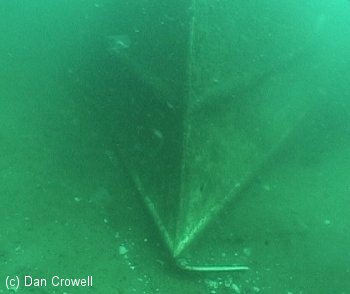
Courtesy of Dan Crowell
Photo courtesy of Capt. Duane Clause
Location courtesy of Capt. Lou Wary

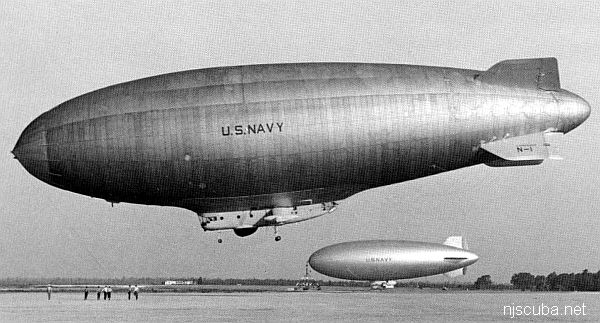
Questions or Inquiries?
Just want to say Hello? Sign the .